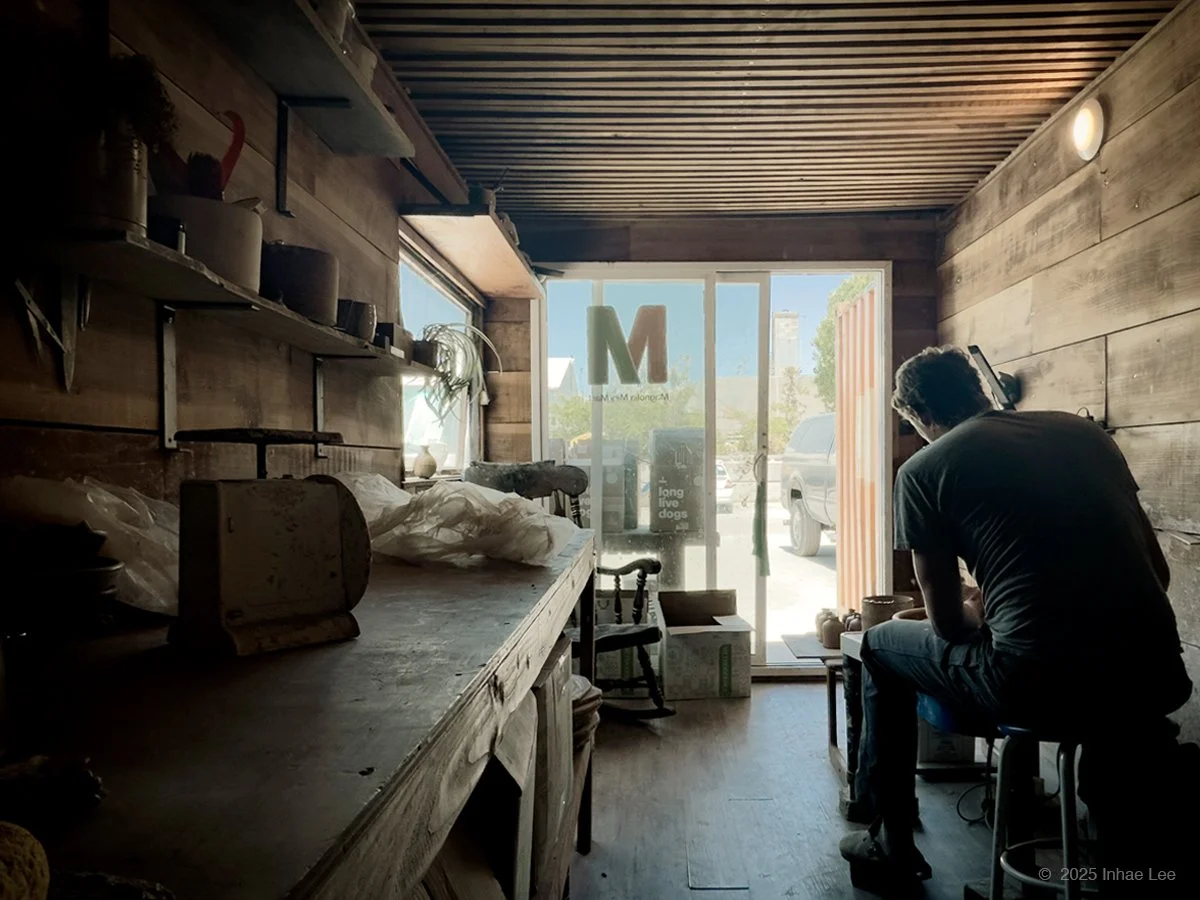Meet The Potter
Matt Fishman

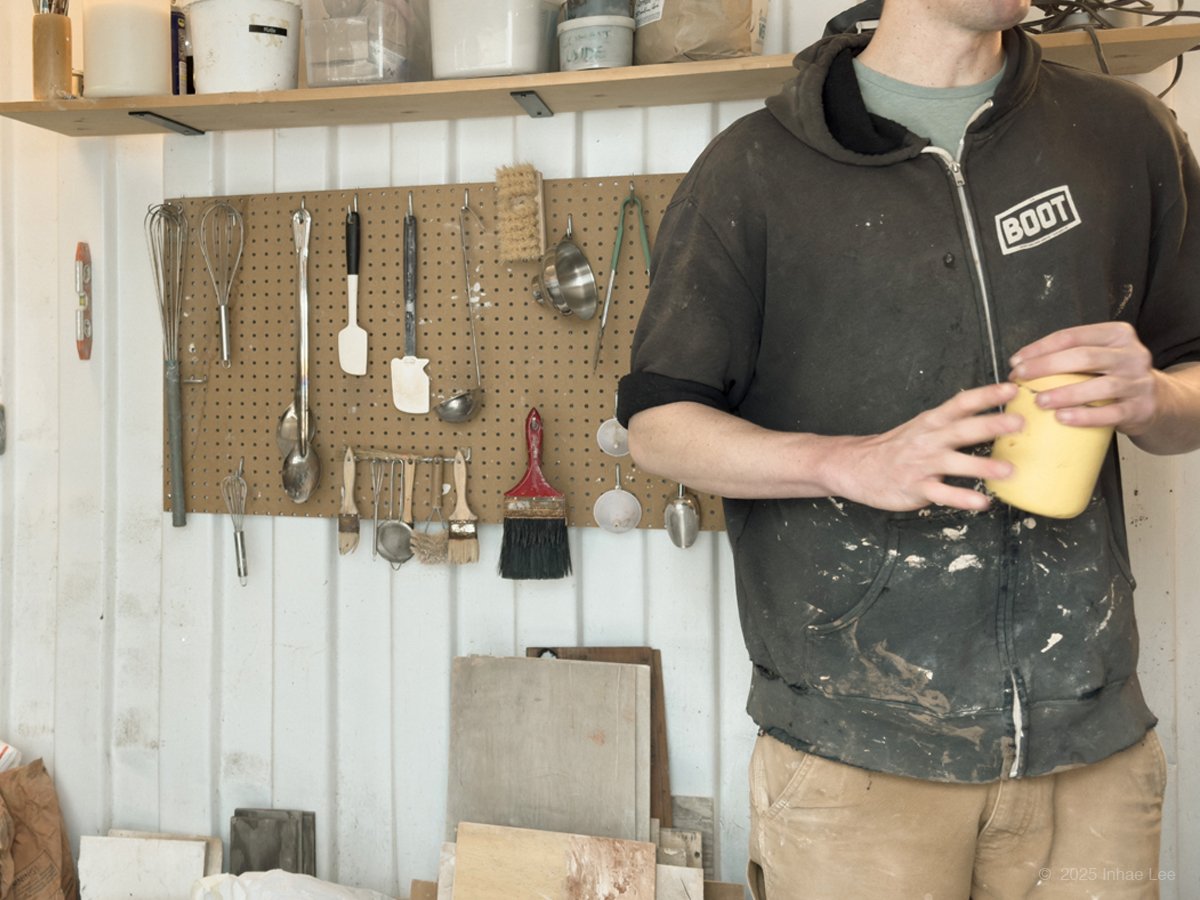

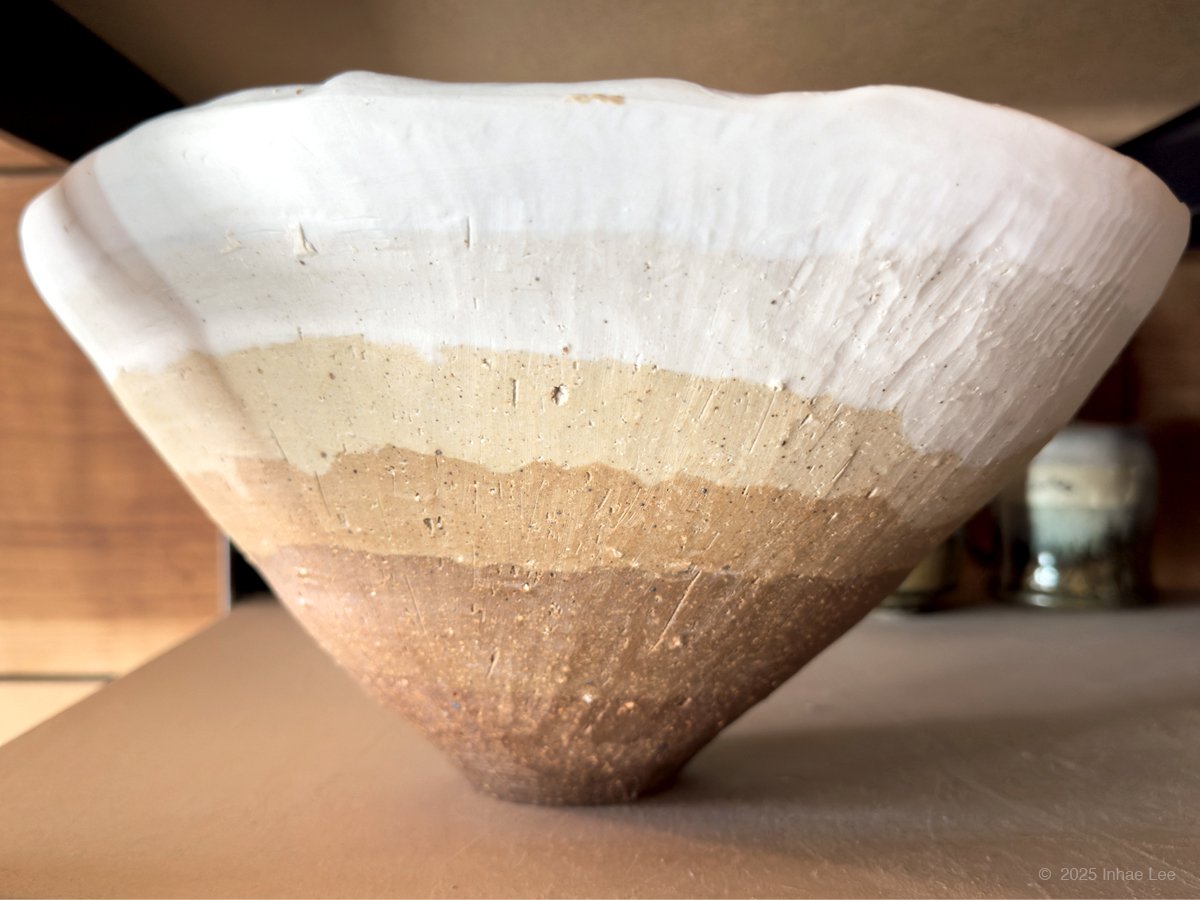
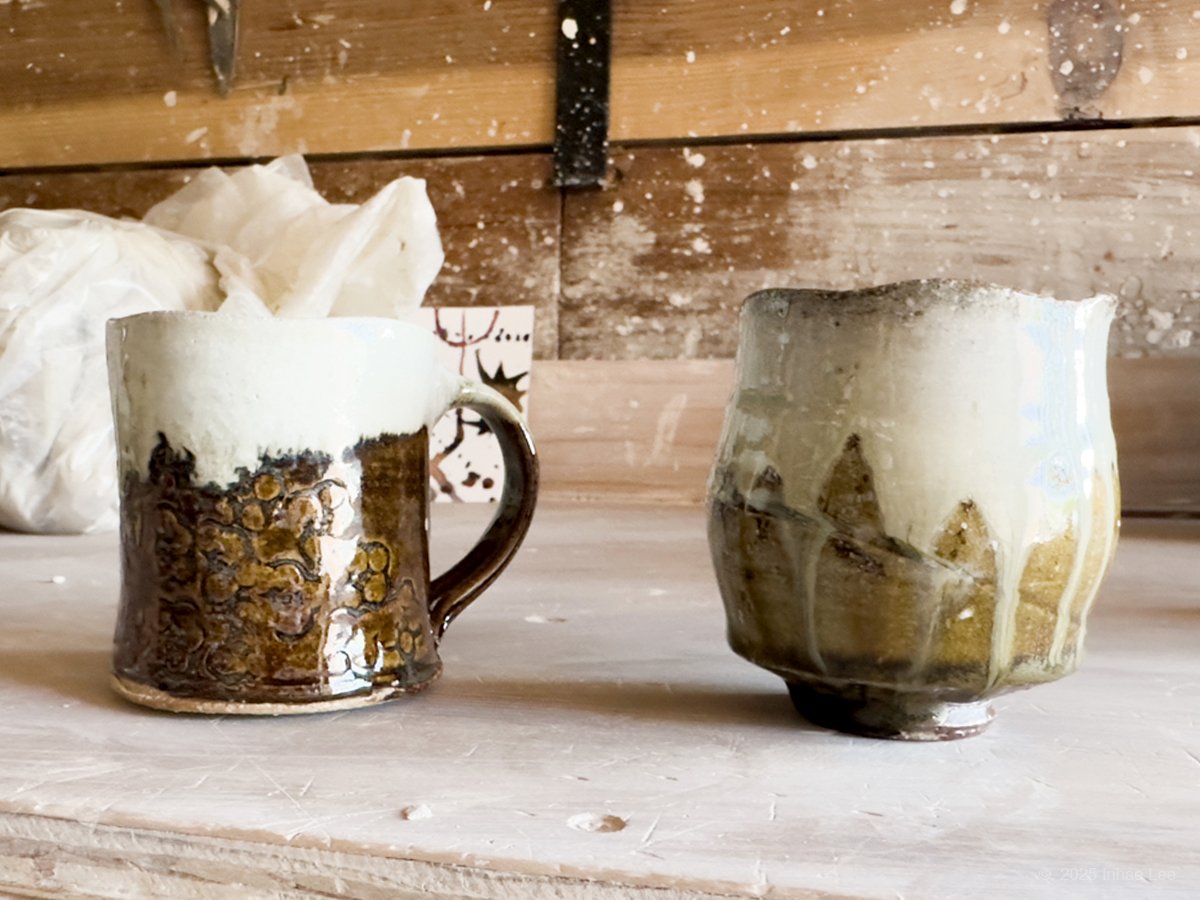

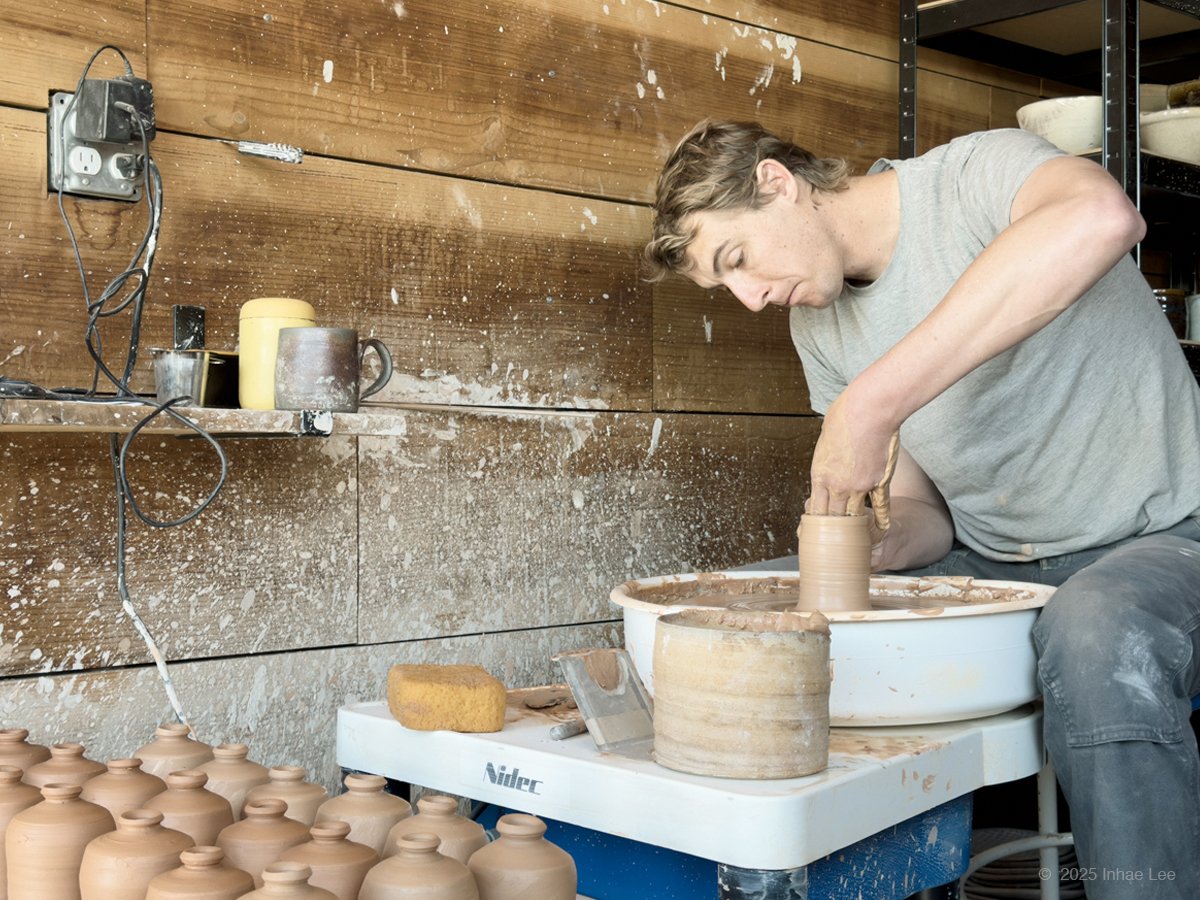



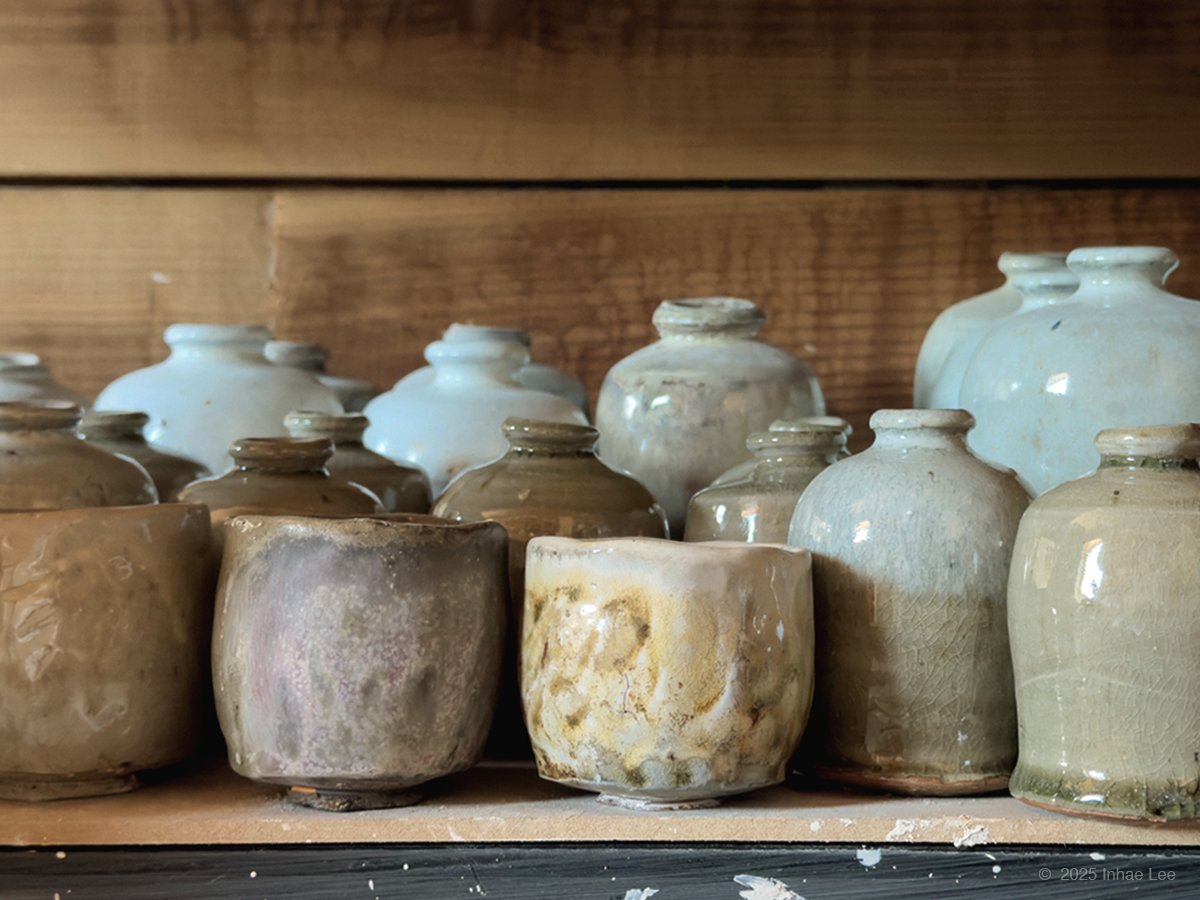
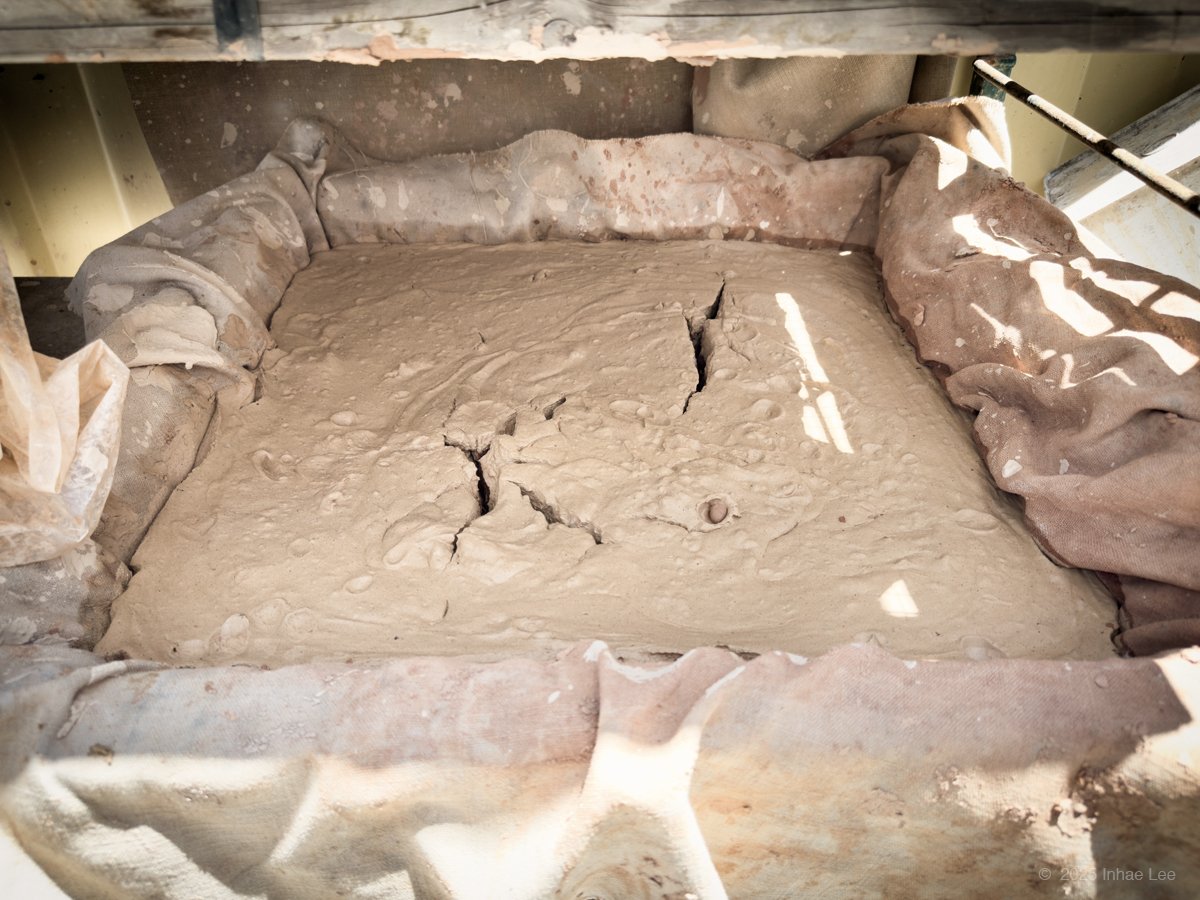
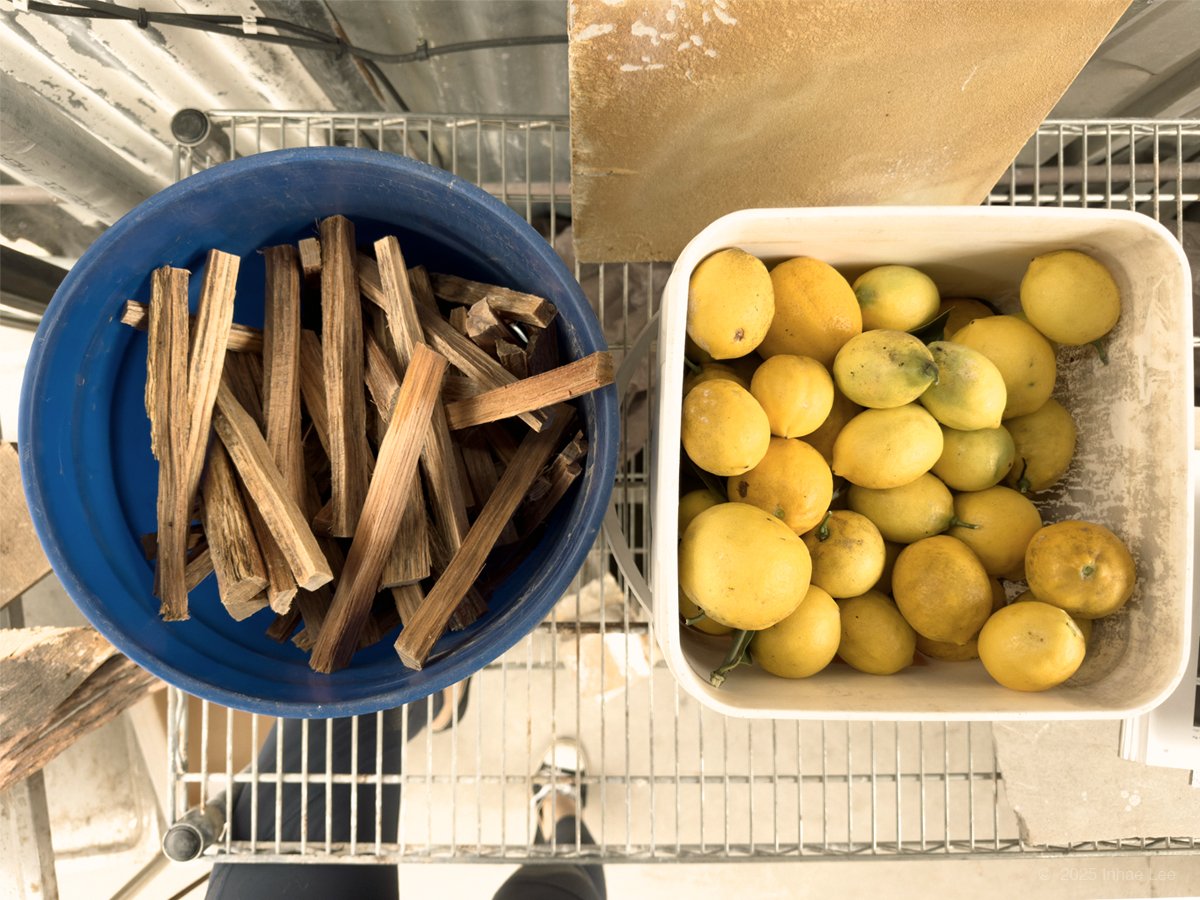


What is your name? Matt Fishman
How long have you been a Member at The Potters’ Studio? I've been a Member for about ten years now.
What is your everyday occupation? Pottery is my everyday occupation and has been for the past 6 years or so. I make and sell pots to restaurants, retail shops, online and in-person sales. I also teach at TPS.
When did you start working with clay, and what was the first memorable clay piece you created? I started working with clay in a high school class and then during college, but only casually. There's one cup I kept from my first college semester that's actually not bad, but other than that I don't think I made a piece I was actually happy with until I had been doing it for a few years.
How would you describe your work? Describing work is hard. I'd say I have two different styles that I work in: one is contemporary American – simple shapes, neutral glazes, striving to be very consistent and functional. The other style is more Japanese-inspired (it pains me how cliche it is for a potter to say that, but if it’s true, it’s true) with rougher surfaces from wild clay/glazes, more textured, funkier, freer shapes. Working in both styles keeps things from feeling stale and satisfies different markets.
What type of classes have you been teaching at TPS? I mostly teach wheel-throwing at TPS but have taught a class with Katie Gibbs on utilizing locally foraged clay and glazes. That was a lot of fun and I'm hoping to do it again.
In 2022, you contributed to an extensive article on ‘Wild Clay and Glaze’ in Ceramics Monthly. What inspired you to start experimenting with them? What were the challenges? I was inspired to start with wild clay from some other local potters, namely Mitch Iburg, who was living in CA at the time and whose work I saw at some show. Working in restaurants before that contributed a lot as well. Bay Area restaurants are so focused on using local ingredients that it surprised me that ceramic artists weren't doing the same. It's been challenges all the way through, but there's a lot of info available at this point to get people started. I think the biggest challenge working with them is just learning to accept a certain amount of failure. Most clays won't work for pottery straight from the ground so it takes a lot of trial and error to get them to a usable place; having the patience to see that process through is hard.
How has your work developed over time? I'd say my work has slowly gotten better over time, but the overall style hasn't changed much. It's really satisfying to be able to more consistently throw the size and shape you're going for and be able to hone in on increasingly small details, so I'd say it’s a slow evolution of that sort.
Do you approach soda firing differently than others at TPS? I'm still finding out what sort of soda firing I'd like to pursue. I've been doing some reduction-cooled firings recently with promising results, but it’s hard to control/repeat. I tend to like quieter and darker soda surfaces, but the drippy stuff is fun too so I go back and forth.
How did you start planning and executing the creation of your own studio/full production setup? Setting up a studio was a real challenge. Finding a space with access to a kiln, or at least a gas line is the biggest hurdle. Luckily, a friend let me know one that was available, so after that it's just getting all of the equipment and materials together and finding the best way of organizing everything.
How long did it take for your ceramic work to support you so you could do it full-time? It's hard to say when pottery became a sustainable full-time job for me. The first couple years after I quit cooking full-time, I would still pick up catering gigs here and there to supplement my pottery income. I'm also really bad at tracking that kind of thing, but I'd say that it was 2-3 years from selling a little work here and there to relying on it.
What cultural influences have shaped the style you create? I take inspiration from lots of cultures. Japan and Korean pottery traditions are probably the most direct influence on the wild clay and glazed work; they've been melting rocks and ash into glaze for a long time so it's a good starting point. But I also like old European pots, Appalachian and Southern US pottery traditions are always in my head too.
How do you deal with falling into a creative rut? I honestly never have to worry about creative rut. That said, I don't consider my work to be that creative, which I only say partially tongue-in-cheek. I have the opposite problem: every glaze test makes me want to try five more.
Who are some artists you admire? Artists I admire: Bandana Pottery, Ken Matsuzaki, Lee Kang Hyo, and Anne Mette Hjortshøj are probably my favorite potters. I get plenty of inspiration from food, music, other arts/crafts as well.
What’s the most inspiring thing you’ve seen, read, watched, or listened to recently? I finally got around to reading a Dostoevsky book recently and really liked it, Notes from Underground.
What advice would you give to starting potters who want to focus on creating utilitarian wares for restaurants / editorial shops? Advice for restaurant ware: Keep yourself out of it. You aren't making these pots to express yourself (at least not primarily); their job is to make the food look good. Make sure they're durable, consistent, and stack well. Restaurants abuse plates more than a person at home and if items start to break too soon you won't get that next order. Retail shops have a lot more wiggle room in that regard, so I'll do more experimental/fragile pieces there.
Interview article and photography by Inhae Lee

